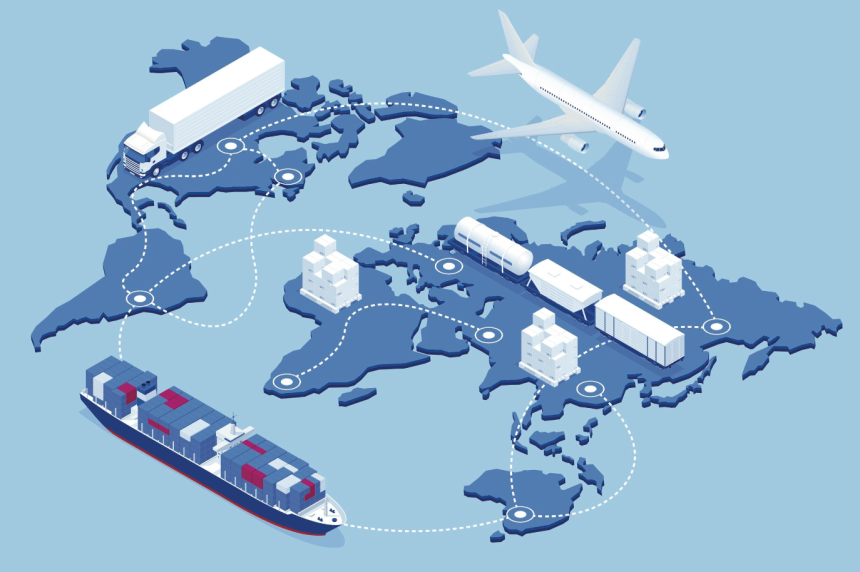Supply chain disruptions. It’s a phrase you’ve probably heard a lot lately. Whether it’s due to global pandemics, natural disasters, or sudden shifts in market demand, supply chain issues can put businesses in a bind. If you’re reading this, you’re likely feeling the strain and wondering how you can build a more resilient supply chain that can weather the next storm. So, how do you overcome these challenges and ensure your business keeps running smoothly?
What Causes Supply Chain Issues?
First, it’s important to understand the root of your supply chain issues. Are you often delivering to remote locations? Is there something wrong with your set-up that’s making you inefficient? These sorts of issues come from a variety of sources, but they tend to fall into a few key categories:
- Unpredictable Demand – Sometimes consumer behavior changes quickly, and if your supply chain isn’t nimble, it can struggle to meet demand.
- Supplier Shortages – Your suppliers may face their own challenges, like material shortages or labor disruptions, which trickle down to your business.
- Logistical Disruptions – Shipping delays, transportation breakdowns, or customs backlogs can derail your carefully planned operations.
- Natural Disasters – Events like hurricanes, floods, and wildfires can interrupt not only your operations but also those of your suppliers.
- Economic Shifts – Currency fluctuations, trade restrictions, or tariffs can add unexpected costs and delays.
Now that you know what you’re up against, let’s explore the strategies that can help you overcome these obstacles.
1. Diversify Your Supplier Base
One of the most common mistakes businesses make is relying on a single supplier for critical materials or products. If that supplier experiences disruptions, you’re left scrambling to find alternatives. Instead, try building relationships with multiple suppliers, ideally in different geographic locations.
This approach reduces your risk of being left high and dry if one region or supplier runs into issues. It’s like having a backup plan – if one supplier can’t deliver, you have others ready to step in.
2. Invest in Inventory Management Technology
Managing your inventory manually or with outdated systems is like driving a car with no dashboard—how can you possibly make informed decisions? By investing in modern inventory management software, you gain real-time visibility into your stock levels, supply chain status, and potential bottlenecks.
With this data at your fingertips, you can make smarter decisions about when to reorder, which suppliers are delivering on time, and how to adjust your purchasing based on current trends. The result? You can minimize stockouts and avoid overstocking, saving both time and money.
3. Strengthen Supplier Relationships
Do you have an open line of communication with your suppliers? If not, now’s the time to change that. By building strong relationships with your suppliers, you’re more likely to get advanced notice of potential issues. This allows you to act quickly—whether it’s securing alternative supplies or adjusting your timelines.
Additionally, suppliers who value their relationships with you may prioritize your orders during a disruption. It’s a win-win, and it all starts with better communication.
4. Use Data to Forecast Demand
Nobody has a crystal ball, but data analytics can get you pretty close. Modern forecasting tools allow you to predict customer demand more accurately based on past trends, market conditions, and other variables. If you know when to expect a surge in orders, you can better prepare your supply chain to handle it.
By having this foresight, you can also communicate with your suppliers and carriers to ensure they are ready to meet your needs, reducing the chances of delays or stockouts.
5. Diversify Your Transportation Options
We often focus on suppliers when we talk about supply chain disruptions, but don’t forget the importance of your transportation network. Relying too heavily on one method of transportation—whether it’s trucking, air, or sea—can leave you vulnerable to bottlenecks.
Explore alternative shipping routes or methods. For instance, if port delays are a regular issue, air freight could be a faster, albeit more expensive, solution. The key here is to be flexible. By having a range of transportation options at your disposal, you can react quickly when one channel is disrupted.
6. Build a Contingency Plan
What happens when things go wrong? Do you have a plan in place? Businesses that develop a detailed contingency plan are far better equipped to deal with disruptions. A solid plan includes identifying potential risks, establishing backup suppliers, and outlining steps to minimize damage if your supply chain is compromised.
Make sure your team knows the plan inside and out, so when a disruption occurs, everyone knows their role and can act quickly.
7. Embrace Local Sourcing
Global suppliers may offer cost advantages, but sourcing locally has its benefits when it comes to reliability. By partnering with local suppliers, you reduce the risk of long-distance transportation delays and customs issues. Not to mention, you may be able to visit your local suppliers more frequently, fostering stronger relationships and greater trust.
While local sourcing might not be possible for every aspect of your supply chain, it’s worth considering where you can make these shifts.
8. Regularly Review and Update Your Strategy
A resilient supply chain isn’t something you create once and forget about. Regular reviews are essential. As markets change, technology evolves, and new risks emerge, your strategy needs to adapt. Make it a habit to assess your supply chain’s strengths and weaknesses at least once a year—more often if you operate in a particularly volatile industry.
Are you still relying on outdated technology? Have your suppliers introduced new risks? Are there emerging trends you should be aware of? Keeping your strategy up to date ensures you’re always ready for whatever comes your way.
Building for the Future
Supply chain disruptions are inevitable, but how you respond can make all the difference. By diversifying your suppliers, using data to forecast demand, and embracing flexibility in transportation and sourcing, you can create a supply chain that’s resilient enough to withstand the unexpected.















